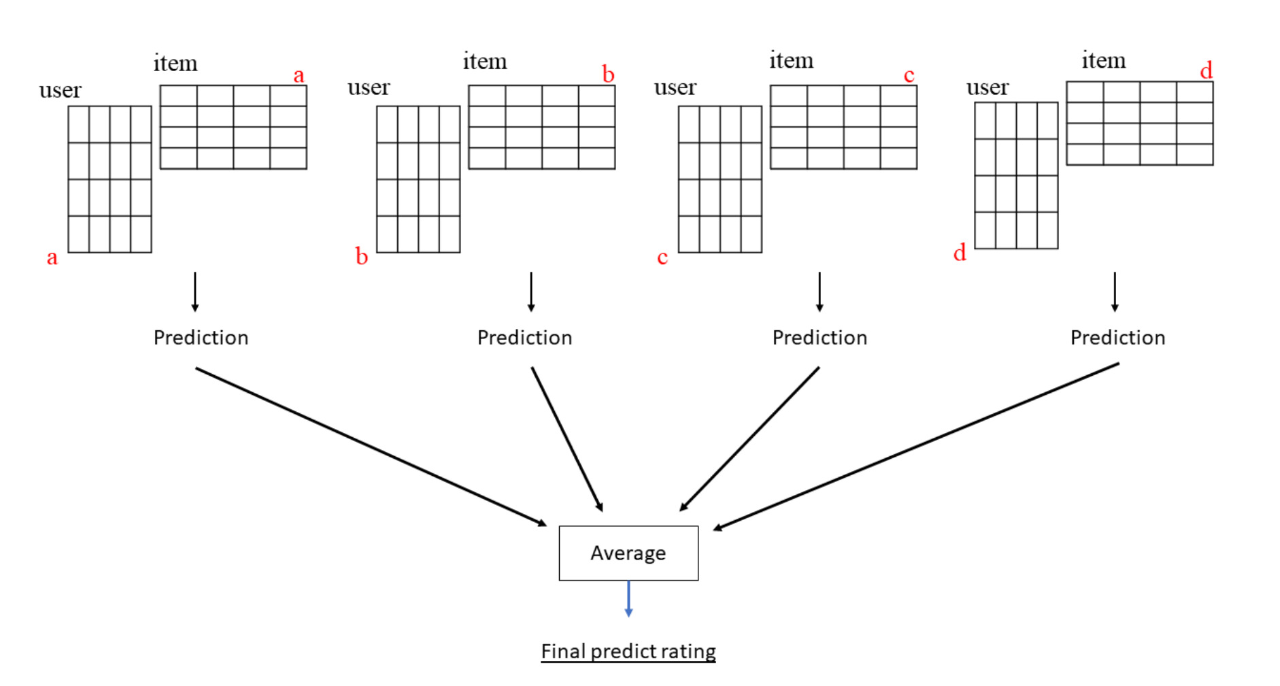Multiple Latent Space Ensemble for Matrix Factorization Based Collaborative Filtering
Main Article Content
Abstract
Matrix factorization is arguably one of the most widely employed collab- orative ltering techniques for recommender systems. The recommendation is obtained based on the user-item relationships discovered within some lower-dimensional latent space. The optimal latent space is generally data-dependent and often needs to be selected using the time-consuming cross-validation scheme. In this paper, we propose to leverage the power of the ensemble method not only to facilitate the hyper-parameter selection but also to improve the predictive performance of the system. Specically, we studied ways to combine predictions from multiple Singular Value Decomposition models, each operates in its own latent space. Experimental results based on MovieLen100K, MovieLen1M, Bookcrossing and Filmtrust datasets demonstrated that the ensembles outperformed a tuned single model in terms of RMSE and MAE while requiring no additional model selection step. Ensemble sizes experiment have shown that the 21 submodel of the ensemble models produce better results than the 14, 8 and standalone model. However, it takes longer to complete. We also found that an ensemble that pays more attention to lower-dimensional latent spaces tends to generalize better.
Article Details

This work is licensed under a Creative Commons Attribution-NonCommercial-NoDerivatives 4.0 International License.
References
B. Walek and P. Spackova, “Content-Based Recommender System for Online Stores Using Expert System,”2018 IEEE First International Conference on Artificial Intelligence and Knowledge Engineering (AIKE), pp. 164–165, 2018.
S. Wang, G. Sun, and Y. Li, “SVD++ recommendation algorithm based on backtracking,” information, vol. 11, no. 7, 2020.
W. Shi, L. Wang, and J. Qin, “User embedding for rating prediction in SVD++-based collaborative filtering,” Symmetry, vol. 12, no. 1, 2020.
X. Zhou, J. He, G. Huang, and Y. Zhang, “SVD- based incremental approaches for recommender systems,” Journal of Computer and System Sciences, vol. 81, no. 4, pp. 717–733, 2015.
S. Zheng, C. Ding, and F. Nie, “Regularized Singular Value Decomposition and Application to Recommender System,” no. 3, 2018, [Online]. Available: http://arxiv.org/abs/1804. 05090.
J. C. Huang et al., “Predictive modeling of blood pressure during hemodialysis: a comparison of linear model, random forest, support vector regression, XGBoost, LASSO regression and ensemble method,” Computer Methods and Programs in Biomedicine, vol. 195, p. 105536, 2020.
R. Harimurti, Y. Yamasari, Ekohariadi, Munoto, and B. I. G. P. Asto, “Predicting student’s psychomotor domain on the vocational senior high school using linear regression,” 2018 Interna- tional Conference on Information and Communications Technology (ICOIACT), pp. 448–453, 2018.
S. Funk, “Netflix Update: Try This at Home, ”2006, [Online]. Available: http://sifter. org/simon/journal/20061211.html.
A. Paterek, “Improving Regularized Singular Value Decomposition for Collaborative Filtering,” Proceedings of KDD cup and workshop, pp. 39-42, 2007.
Y. Koren, “Collaborative filtering with temporal dynamics,” Proceedings of the 15th ACM SIGKDD international conference on Knowledge discovery and data mining, pp. 447-456, 2009.
D. Prasertttitipong and P. Sophatsathit, “An agent model for information filtering using revolutionary RSVD technique,” Chiang Mai Journal of Science, Vol.41 No.5/2, pp. 1429-1438, 2014.
P. Clerkin, C. Hayes, P. Cunningham, H. Grant, and A. Macdowell, “Automated Case Generation for Recommender Systems Using Knowledge Discovery Techniques,” Trinity College Dublin, Department of Computer Science, pp. 7, 2002.
L. Barrington, R. Oda, and G. Lanckriet, “Smarter than genius? Human evaluation of music recommender systems,” 10th International Society for Music Information Retrieval Conference (ISMIR 2009), pp. 357–362, 2009.
A. O. Afolabi and P. Toivanen, “Recommender Systems in Healthcare: Towards Practical implementation of Real-Time Recommendations to Meet the Needs of Modern Caregiving,” in Handbook of Research on Emerging Perspectives on Healthcare Information Systems and Informat- ics, 2018, ch. 14, pp. 323–346.
A. Azaria, A. Hassidim, S. Kraus, A. Eshkol, O. Weintraub, and I. Netanely, “Movie recom- mender system for profit maximization,” Proceedings of the 7th ACM conference on Recommender systems, pp. 121-128, 2013.
J. E. McDade, “A hypothesis for non-oral reading: Argument, experiment, and results,” The Journal of Educational Research, vol. 30, no. 7, pp. 489–503, 1937.
X. Guan, C. T. Li, and Y. Guan, “Matrix Factorization with Rating Completion: An En- hanced SVD Model for Collaborative Filtering Recommender Systems,” IEEE Access, vol. 5, pp. 27668–27678, 2017.
P. Classification, Using Ensemble Methods, p. 3, 2013.
F. M. Harper and J. A. Konstan, “The MovieLens Datasets: History and Context,” ACM Transactions on Interactive Intelligent Systems, vol. 5, no. 4, pp. 1–19, 2016.
F. Zhang, “Improving recommendation lists through neighbor diversification,” 2009 IEEE International Conference on Intelligent Computing and Intelligent Systems, vol. 3, pp. 222–225, 2009.
G. Guo, J. Zhang, and N. Yorke-Smith, “A novel bayesian similarity measure for recommender systems,” Proceedings of the Twenty-Third International Joint Conference on Artificial Intelligence, pp. 2619–2625, 2013.
R. Ahuja, A. Solanki, and A. Nayyar , “Movie recommender system using k-means clustering and k-nearest neighbor,” 2019 9th International Conference on Cloud Computing, Data Science & Engineering (Confluence), pp. 263–268, 2019.
D. Lemire, and A. Maclachlan, “Slope one predictors for online rating-based collaborative filtering,” Proceedings of the 2005 SIAM International Conference on Data Mining, pp. 471–475, 2005.
X. Luo, M. Zhou, Y. Xia, and Q. Zhu, “An efficient non-negative matrix-factorization-based approach to collaborative filtering for recommender systems,” IEEE Transactions on Industrial Informatics, vol. 10, no. 2, pp. 1273–1284, 2014.


